Today’s Current Affairs: 20th Jul 2023 for UPSC IAS exams, State PSC exams, SSC CGL, State SSC, RRB, Railways, Banking Exam & IBPS, etc
Table of Contents
Srivilliputhur Megamalai Tiger Reserve: Building iIlegal Resort
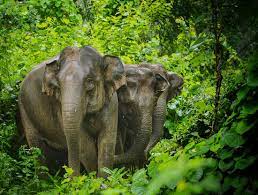
An RTI query recently revealed that the forest department has identified 12 illegal, unauthorised or unrecognised resorts in Srivilliputhur Megamalai Tiger Reserve (SMTR), Megamalai division in Theni.
- Srivilliputhur Megamalai Tiger Reserve (SMTR) is spread across the districts of Theni, Virudhunagar and Madurai in Tamil Nadu.
- It lies in the Western Ghats region.
- SMTR is India’s 51st tiger reserve and 5th tiger reserve of Tamil Nadu.
- It was formed in February 2021 by combining Grizzled Squirrel Wildlife Sanctuary and Megamalai Wildlife Sanctuary.
- It will function as a connecting link between Kerala’s Periyar Tiger Reserve and Tamil Nadu’s Southern Kalakkad-Mundanthurai Tiger Reserve.
- SMTR will provide protection to Megamalai, the Vaigai River’s primary catchment, in turn helping water levels to rise in the river.
- It’s a blend of tropical evergreen and semi-evergreen forests, dry deciduous and moist mixed deciduous woods, and grasslands.
- Fauna : Elephants, Tiger, Leopard, Nilgiri Tahr, Gaur, Spotted Deer, Barking Deer, Sambar Deer, Wild Boar, Porcupine, Nilgiri Langur, Lion-Tailed Macaque etc.
DPT3 Vaccine : Report

According to the WHO and UNICEF estimates for national immunization coverage for 2022, the coverage rate for DPT3, the third dose of diphtheria, pertussis and tetanus vaccines, in India rose to an all-time of 93% in 2022.
- DPT3 Vaccine is a class of combination vaccines against three infectious diseases in humans: diphtheria, pertussis (whooping cough), and tetanus.
- The vaccine components include diphtheria and tetanus toxoids and either killed whole cells of the bacterium that causes pertussis or pertussis antigens.
- The primary dose of DPT provided as part of pentavalent vaccine and 2 booster doses are given at 16 -24 months and 5-6 years, respectively.
Diphtheria:
- It is an infectious disease caused by Corynebacterium diphtheria, a bacterium.
- Diphtheria particularly affects children aged 1 to 5 years. In temperate climates diphtheria tends to occur during the colder months.
Tetanus:
- It is an infection caused by bacteria called Clostridium tetani.
- When these bacteria enter the body, they produce a toxin that causes painful muscle contractions.
- Tetanus bacteria are more likely to infect certain breaks in the skin
- It does not spread from person to person.
Pertussis:
- It is also known as whooping cough.
- It is a very contagious respiratory illness caused by a type of bacteria called Bordetella pertussis.
- Whooping cough bacteria attach to the cilia (tiny, hair-like extensions) that line part of the upper respiratory system.
- The bacteria release toxins (poisons), which damage the cilia and cause airways to swell.
- It can spread easily from person to person through the air.
European Union’s Foreign Subsidies Regulation:
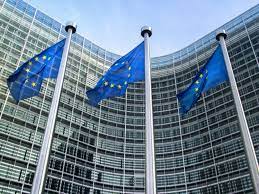
The Foreign Subsidies Regulation (FSR) of the European Union (EU) is likely to hit India’s exports, the Global Trade Research Initiative (GTRI), a New Delhi-based think tank, recently said in a report.
- The European Union’s FSR entered into force on 12 January 2023.
- Combating distortions of competition on the EU internal market caused by foreign subsidies.
- It will allow EU to investigate financial contributions granted by non-EU governments to companies active in the EU, and prohibit the award of public contracts to a company that has unduly profited from foreign subsidies.
- It imposes mandatory notification and approval requirements for acquisitions of significant EU businesses and large EU public tenders, and gives the European Commission (EC) extensive powers to launch ex officio investigations.
- The EC is the sole enforcer of the FSR.
- In cases where the European Commission finds that a foreign subsidy is distorting competition, it can impose various remedies, including
- fines of up to 10% of the company’s annual aggregated turnover;
- requiring the company to repay the foreign subsidy if competition distortion is confirmed;
- banning the company from participating in public procurement;
Foreign Financial Contributions under the FSR:
- FSR covers financial contribution from non-EU governments to firms operating in/exporting to EU’s market.
- Such a contribution may be distortive where it confers a benefit not normally available on the market to a company in the EU, and that benefit is specific to one or more companies or industries as opposed to all companies or all companies active in a particular industry.
Bharat Bill Payment System:

CEO of Bharat Bill Pay recently said Bharat Bill Pay has witnessed a threefold business growth in just two years.
- Bharat Bill Payment System (BBPS) is an integrated bill payment system or a platform which acts as a connect between various billers and users.
- It is a one-stop ecosystem for payment of all bills providing an interoperable and accessible “Anytime Anywhere” Bill payment service to all customers across India with certainty, reliability and safety of transactions.
- It offers customers the convenience of payment by cataloguing various utility providers under one platform.
- It acts as a central reference for a customer who wants to make different payments — whether utility bills, loan repayments, FasTag recharge, and so on.
- Bharat BillPay transactions can be initiated through multiple payment channels like Internet, Internet Banking, Mobile, Mobile-Banking, Mobile Wallets Bank Branch, Agents and Business Correspondents etc.
- It provides instant confirmation of payment via an SMS or receipt.
- BBPS was conceptualised by the Reserve Bank of India in 2013 and is a product of the National Payments Council of India (NPCI).
- It was piloted in 2016 and went live a year later.
- By 2019, BBPS onboarded all recurring payments.
- There are two key components in the BBPS system,
- Bharat Bill Payment Central Unit (BBPCU): The BBPCU is NPCI, which lays downs the operating procedures and standards for BBPS.
- Bharat Bill Payment Operating Units (BBPOUs): BBPOUs adhere to the rules set by BBPCU. They are the banking and non-banking entities that handle the payments load.
Ghaggar River : Floodplains In Haryana
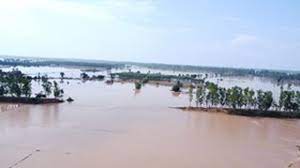
The Ghaggar River and its tributaries caused havoc after reclaiming their floodplains in Haryana.
- Ghaggar, Tangri, Markanda and others are considered dead rivers in the state and heavily encroached upon but in this monsoon season they reclaimed their floodplains and caused heavy losses.
- Ghaggar River and many of its tributaries originate in the Shivalik foothills of Haryana, Punjab and Chandigarh.
- Among these tributaries, the Kaushalya, Tangri, Markanda, Beghna and Sukhna rivers are the ones that merge into the Ghaggar.
- The Ghaggar-Hakra River is an intermittent river in India and Pakistan that flows only during the monsoon season.
- The river is known as Ghaggar in India, before the Ottu barrage, and as the Hakra in Pakistan, downstream of the barrage.
- It eventually dries up in the Great Indian (Thar) Desert.
Digital Time Vouchers:
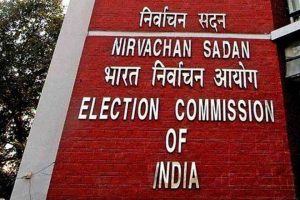
The Election Commission of India has decided to issue digital time vouchers to National & State political parties for campaigning on Doordarshan & All India Radio during elections.
- The Election Commission of India has amended the existing scheme for the use of Government-owned electronic media by political parties.
- This has been done by introducing a provision to issue digital time vouchers through an Information Technology (IT) platform.
- Each party shall be given time Vouchers of different denominations of, 5 minutes and 10 minutes, equal to the total time allotted to it for telecasts on Doordarshan and broadcasts on AIR.
- That party shall have the discretion to choose any representatives and allow them to use those time vouchers provided that no such individual representative shall be allowed to use more than 20 minutes of the total time allotted to that party, either on Doordarshan or on AIR.
- The scheme was initially notified on 16th January 1998, holds a statutory basis under Section 39A of the Representation of People Act, 1951.
- It aimed at ensuring equitable access to government-owned electronic media during elections for campaigning.
- Under this Scheme, an equitable base time is allotted to each National Party and Recognized State Party of the state concerned uniformly on DD & AIR.
UNAIDS Report: Progress & Challenges In HIV/AIDS Fight

A recent report titled “The Path That Ends AIDS” by the Joint United Nations Programme on HIV/AIDS (UNAIDS) sheds light on the progress made in combating reveals the ongoing challenges and progress in the global fight against Acquired Immunodeficiency Syndrome (AIDS) and human immunodeficiency virus (HIV).
- The report emphasizes the need for continued efforts to ensure access to treatment, address inequalities, combat stigma and discrimination, and secure adequate funding.
Highlights of the UNAIDS Report:
AIDS-Related Deaths and Access to Treatment:
- AIDS claimed a life every minute in 2022.
- Approximately 9.2 million people living with HIV worldwide lacked access to treatment in 2022.
- Out of the 2.1 million people receiving treatment, many were not virally suppressed.
Treatment Progress and Global Targets:
- 29.8 million out of 39 million people living with HIV globally are receiving life-saving treatment.
- Between 2020 and 2022, 1.6 million additional people received HIV treatment each year.
- The global target of 35 million people receiving HIV treatment by 2025 is within reach if the progress is sustained.
Slow Treatment Progress in Certain Regions:
- Eastern Europe, Central Asia, the Middle East, and North Africa exhibited slower treatment progress.
- Only around half of the over two million people living with HIV in these regions received antiretroviral therapy in 2022.
Gender Discrimination and Treatment Rates:
- Men living with HIV in sub-Saharan Africa, the Caribbean, Eastern Europe, and Central Asia are less likely to receive treatment compared to women.
- Gender discrimination needs to be addressed to ensure equal access to treatment.
Impact on Children:
- AIDS-related deaths among children reduced by 64% from 2010 to 2022.
- However, approximately 84,000 children lost their lives to HIV in 2022.
- Around 43% of the 1.5 million children living with HIV did not receive treatment in 2022.
Challenges in HIV Prevention:
- Women and girls accounted for 63% of all new HIV infections in sub-Saharan Africa.
- Only about 42% of districts with high HIV incidence in the region have dedicated prevention programs.
- Enhanced prevention efforts are needed to address this gap.
Funding Gaps:
- HIV incidence has declined in regions with increased prevention funding.
- Eastern Europe, Central Asia, the Middle East, and North Africa face challenges in their HIV epidemics due to a lack of funding.
- In 2022, only USD 20.8 billion was available for HIV programs in low- and middle-income countries, falling short of the USD 29.3 billion required by 2025.
Fluctuating Funding Levels:
- In the early 2010s, funding substantially increased, but it has since fallen back to 2013 levels.
- In 2022, there was a 2.6% drop in funding compared to the previous year, with only USD 20.8 billion available for HIV programs in low- and middle-income countries.
- The funding gap remains significant, as the required amount by 2025 is USD 29.3 billion.
Steel Slag Roads:
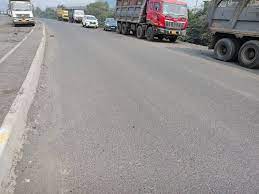
India has developed the world’s latest Steel Road technology by using steel slag.
- Steel slag is a byproduct of steelmaking, and is produced during the separation of molten steel from impurities in steel-making furnaces.
- Steel slag roads are roads constructed using steel slag. Instead of discarding this waste material, it is processed and used as an aggregate in road construction.
- The steel slag is mixed with other materials and technologies to create a durable and sustainable road surface.
- The technology, pioneered by CSIR-Central Road Research Institute (CRRI), allows for the large-scale utilization of waste steel slag from steel plants in road construction.
- It is part of the “Waste to Wealth” initiative and addresses environmental degradation caused by waste steel slag.
- Steel slag roads are well-suited to India’s terrain, offering cost savings of 30% and three times the lifespan of traditional roads.
- It is resistant to weather conditions.
- The success of steel slag roads has been demonstrated in various projects, including in Surat, Arunachal Pradesh, and on National Highway NH-66.
19th Session Of The Commission On Genetic Resources For Food And Agriculture:

The 19th session of the Commission on Genetic Resources for Food and Agriculture (CGRFA) was held in Rome, Italy.
- 19th session of the CGRFA ,venue: FAO headquarters in Rome, Italy.
- Date: from 17 to 21 July 2023.
- Organized by: Food and Agriculture Organization (FAO).
- Focus areas is the state of the world’s forest and plant genetic resources, access and benefit-sharing policies, and biotechnologies for the conservation and sustainable use of genetic resources.
- The Commission will also discuss:-
- a Framework for Action on Biodiversity for Food and Agriculture.
- the role of genetic resources for food and agriculture in mitigation of and adaptation to climate change
- microorganism and invertebrate genetic resources, including pollinator and biological control agents
Commission on Genetic Resources for Food and Agriculture (CGRFA):
- It was Established in 1983.
- The Commission on Genetic Resources for Food and Agriculture (CGRFA) is the only permanent intergovernmental body focused on conserving all types of biodiversity for food and agriculture.
- The Commission consists of 179 Member States and the European Union.
- Membership of the Commission is open to all Members of FAO.
- Objective is to promote international policies for the sustainable use and conservation of genetic resources for food and agriculture, while also ensuring that benefits derived from biodiversity are fairly and equitably shared.
- The Commission offers a unique platform for its members and other stakeholder to promote a world without hunger by fostering the use and development of the whole portfolio of biodiversity important to food security and rural poverty.
- The CGRFA meets regularly to address policies on genetic resources for food and agriculture.




